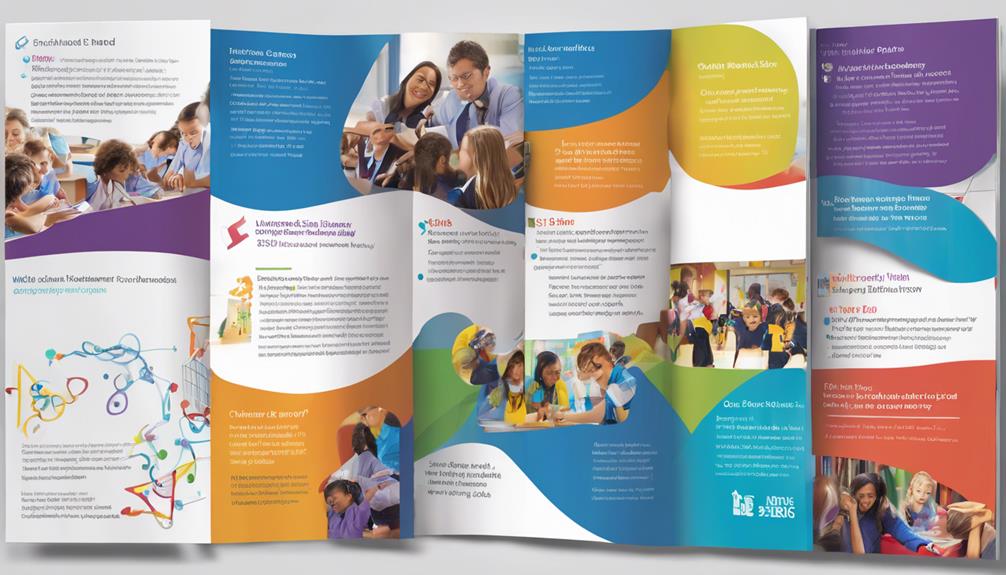When you consider the WI – Private School Bond, you're looking at a significant opportunity for private schools to secure funding without the constraints of traditional loans. This financial tool not only promises investors a steady income but also empowers schools to enhance their programs and facilities. However, it's essential to understand the eligibility requirements and the application process that schools must navigate. What challenges and misconceptions might arise in this landscape, and how can they impact the future of private education funding?
Overview of Private School Bond

A private school bond is a financial instrument that helps private educational institutions raise funds for various needs, such as facility improvements, operational expenses, or capital projects.
When a school issues these bonds, it essentially borrows money from investors, promising to pay them back with interest over a specified period.
You might wonder why a private school would choose this route. The answer lies in the flexibility and potential for significant funding.
Unlike traditional loans, bonds can attract a wider pool of investors, which can lead to more favorable terms. By issuing bonds, schools can secure the necessary funding without immediately impacting their operating budgets.
Investors are often attracted to private school bonds because they can provide a steady stream of income, especially if the school has a solid reputation and a history of financial stability.
As a bondholder, you're essentially investing in the future of education.
Eligibility Requirements
To qualify for a private school bond, institutions must meet specific eligibility requirements set by bond issuers and investors.
First, your school needs to be accredited by a recognized accrediting body, ensuring it adheres to educational standards.
Second, you must demonstrate financial stability, which typically involves providing recent financial statements and evidence of consistent revenue streams. This helps assure investors that your institution can meet its obligations.
Additionally, you'll need to show a clear plan for how the bond funds will be utilized, such as for facility improvements or expansion. It's crucial to outline the projected benefits of the project, including how it enhances educational offerings or increases enrollment.
Another requirement often includes a minimum enrollment threshold, ensuring your institution has a solid student base to sustain operations.
Application Process

Once you've confirmed your eligibility for a private school bond, the next step is navigating the application process. Start by gathering all necessary documents, including proof of residency, income statements, and any relevant identification. These documents will help establish your financial situation and support your application.
Additionally, ensure you understand the specific requirements for the Oklahoma Private School Bond, as it may vary based on your institution's size and financial responsibility.
Next, visit the official website or contact the office responsible for private school bonds in your state. You'll find specific instructions and forms required for your application. Make sure to fill out the application form accurately and completely. Double-check your information to avoid delays.
After submitting your application, keep an eye on your email or mailbox for any communication from the reviewing office. They may request additional information or documentation, so be prepared to respond promptly.
Once your application is processed, you'll receive notification about your bond approval or denial. If approved, you'll get further instructions on how to proceed.
Financial Assistance Details
When it comes to financial assistance for private school, several options are available to help ease the burden of tuition costs.
First, you should explore scholarships offered directly by the school or through external organizations. These can range from merit-based awards to need-based grants, and you'll want to check the eligibility criteria and application deadlines carefully.
Next, consider state-funded programs that might offer financial aid specific to private schooling. Research local initiatives designed to support families who choose private education, as these can significantly reduce your out-of-pocket expenses.
Another option is tuition payment plans, which allow you to spread payments over several months instead of paying a lump sum upfront. This can make budgeting a lot easier.
Additionally, you might qualify for federal tax credits or deductions that can help offset tuition costs. Don't forget to consult a tax professional to maximize potential savings.
Lastly, some private schools offer sliding scale tuition based on family income, so it's worth inquiring about that possibility.
Impact on Tuition Costs

Private school tuition costs can be significantly influenced by the financial assistance options available. When you explore different private schools, you'll notice that some institutions offer scholarships, grants, or sliding scale tuition based on family income. These options can make a high-quality education more accessible for you and your family.
If you're considering a private school, understanding how financial assistance can impact tuition is vital. With the right support, you could reduce the overall cost, making it more feasible to enroll your child. Additionally, some schools may have payment plans that allow you to spread tuition payments over the year, easing the financial burden.
On the flip side, not all schools provide the same level of assistance, which means you need to research and compare options. The availability of funds can fluctuate annually, so staying updated on each school's offerings is essential.
Ultimately, the financial assistance landscape can significantly shape your decision-making process regarding private education, influencing not just tuition costs, but also the overall experience your child will receive. Be proactive in seeking out options that align with your family's financial situation.
Benefits for Families
Exploring private school options reveals numerous benefits for families beyond just financial assistance. One significant advantage is the personalized attention your child receives in smaller class sizes. This tailored approach fosters a deeper understanding of subjects and enhances their learning experience.
Additionally, private schools often emphasize a well-rounded education, including arts, sports, and extracurricular activities that cater to your child's interests. This holistic approach not only helps in academic development but also nurtures social skills and personal growth.
You'll also find that many private schools promote strong community values and parental involvement. This creates a supportive environment where families can connect, share experiences, and actively participate in their children's education.
Furthermore, private schools frequently offer specialized programs or curricula, such as advanced placement courses, language immersion, or STEM initiatives, which can align with your child's unique aspirations and talents.
Ultimately, choosing a private school can enhance your child's educational journey, providing them with opportunities that prepare them for future success, both academically and personally. Embracing these benefits can lead to a more fulfilling educational experience for your family.
Comparison With Other Programs

How do private schools stack up against other educational programs? When you compare private schools to public schools, you'll notice some distinct differences.
Private schools often offer smaller class sizes, allowing for more personalized attention. This can foster a stronger relationship between you and your child's teachers, making it easier to address unique learning needs.
In contrast, charter schools provide a blend of public funding and private management. While they can offer innovative curricula and flexibility, their resources may not always match those of well-established private institutions.
If you're considering homeschooling, you gain full control over your child's education, but it requires a significant commitment of your time and energy.
You might also find online education programs appealing, especially if flexibility is a priority for your family. However, these programs often lack the face-to-face interaction that private schools provide.
Each option has its pros and cons, and it's crucial to assess what fits your child's learning style best. Ultimately, the choice will depend on your family's values, priorities, and resources. Evaluating these differences helps ensure you make an informed decision for your child's education.
Common Misconceptions
Misunderstandings often cloud the perception of private schools, leading many to believe they're exclusively for the wealthy. This misconception overlooks the variety of private schools available, including those that offer scholarships and financial aid.
Many institutions actively seek to enroll students from diverse economic backgrounds, debunking the myth that private education is out of reach for most families.
Another common belief is that private schools lack academic rigor compared to public schools. In reality, numerous private schools maintain high academic standards and often have smaller class sizes, allowing for personalized instruction.
You might find that the curriculum in private schools can be more innovative and tailored to individual student needs.
Some people assume that private schools are unregulated, but that's not the case. Most private schools must adhere to state guidelines and undergo regular evaluations to maintain their accreditation.
Lastly, there's a perception that private schools lack inclusivity. Many private institutions embrace diversity, actively fostering inclusive environments that celebrate different cultures and backgrounds.
Success Stories

Many students thrive in private schools, showcasing the transformative impact these institutions can have on individual lives. You might be surprised to learn how many success stories arise from these settings.
Take Sarah, for instance. She struggled with large class sizes in public school, feeling lost and unheard. After transferring to a private school, she found personalized attention and a curriculum tailored to her interests. With the support of dedicated teachers, she blossomed into a confident student, eventually earning a scholarship to her dream college.
Then there's Jake, who faced bullying in his previous school. In his new private school, he discovered a nurturing environment that emphasized respect and collaboration. With strong mentorship and engaging extracurricular programs, he not only improved academically but also developed lifelong friendships.
These stories are just a glimpse of what private schools can offer. You'll find countless students overcoming challenges, achieving academic success, and preparing for bright futures.
Future of Private School Bonds
As we look toward the future of private school bonds, it's clear that these institutions will continue to play a crucial role in shaping education.
You might notice an increasing focus on innovation and personalized learning experiences within private schools, driven by the flexibility that these bonds provide. With financial backing, schools can invest in technology, attract qualified teachers, and develop unique curricula that cater to diverse student needs.
You'll likely see a rise in partnerships between private schools and local communities. These alliances can enhance resources, provide internships, and create networking opportunities for students.
Additionally, as public school funding fluctuates, private schools may step in to fill gaps, offering a more tailored educational approach.
Moreover, sustainability will become a significant theme. Expect private schools to prioritize eco-friendly practices and socially responsible investment strategies, aligning with broader societal values.
In this evolving landscape, staying informed about private school bonds will be essential. Embracing these changes can help you explore new opportunities for education and investment, ensuring that both students and communities thrive in the years ahead.
Conclusion
In conclusion, the WI – Private School Bond offers a valuable opportunity for educational institutions to secure essential funding while providing investors with a reliable income source. By understanding the eligibility requirements and navigating the application process, schools can significantly enhance their financial stability and resources. As you explore this option, consider how it can impact tuition costs and contribute to the future of private education. Embrace the potential of private school bonds to foster growth and innovation in your institution.


